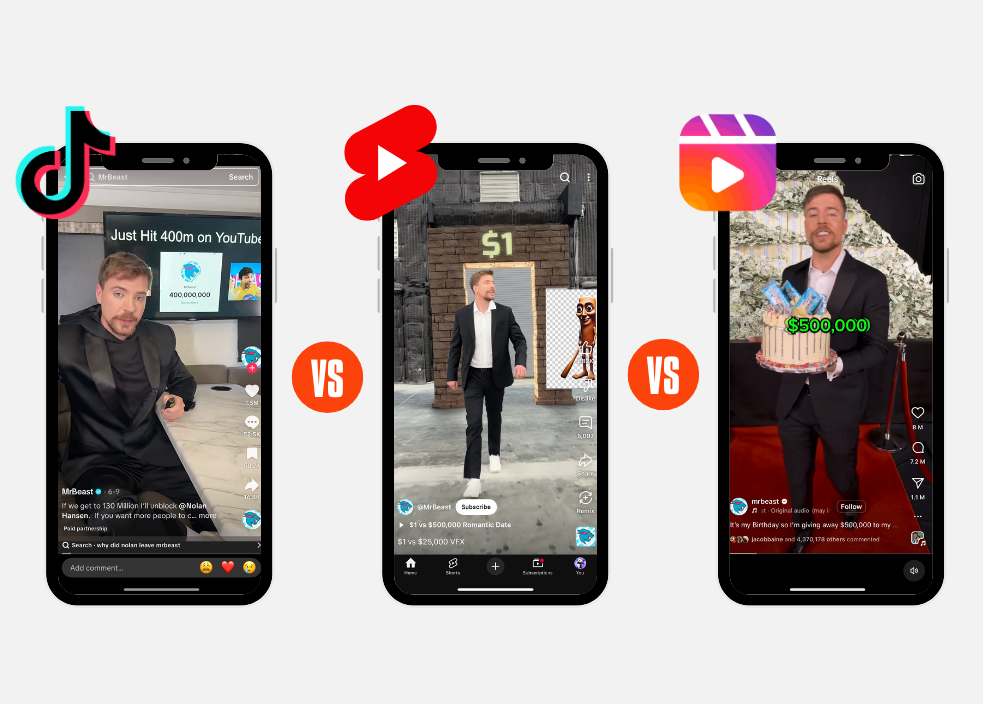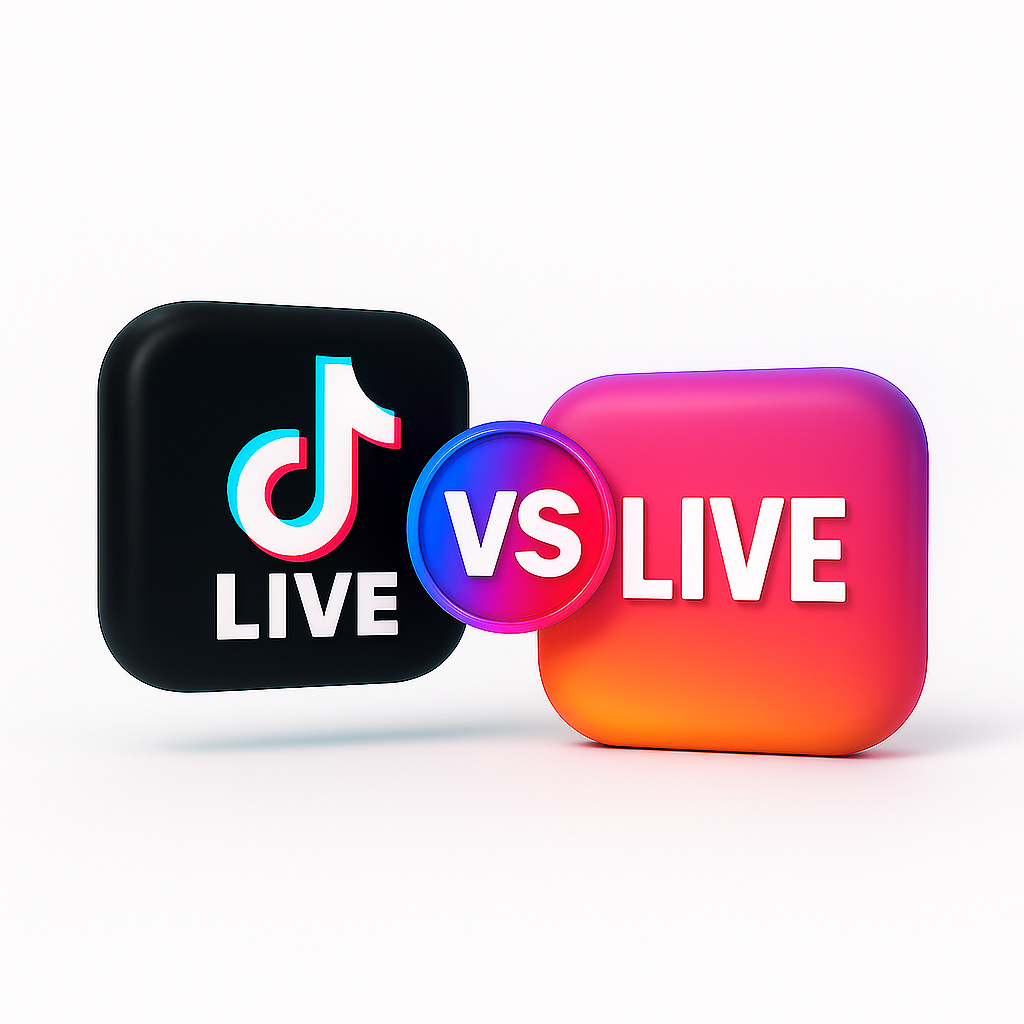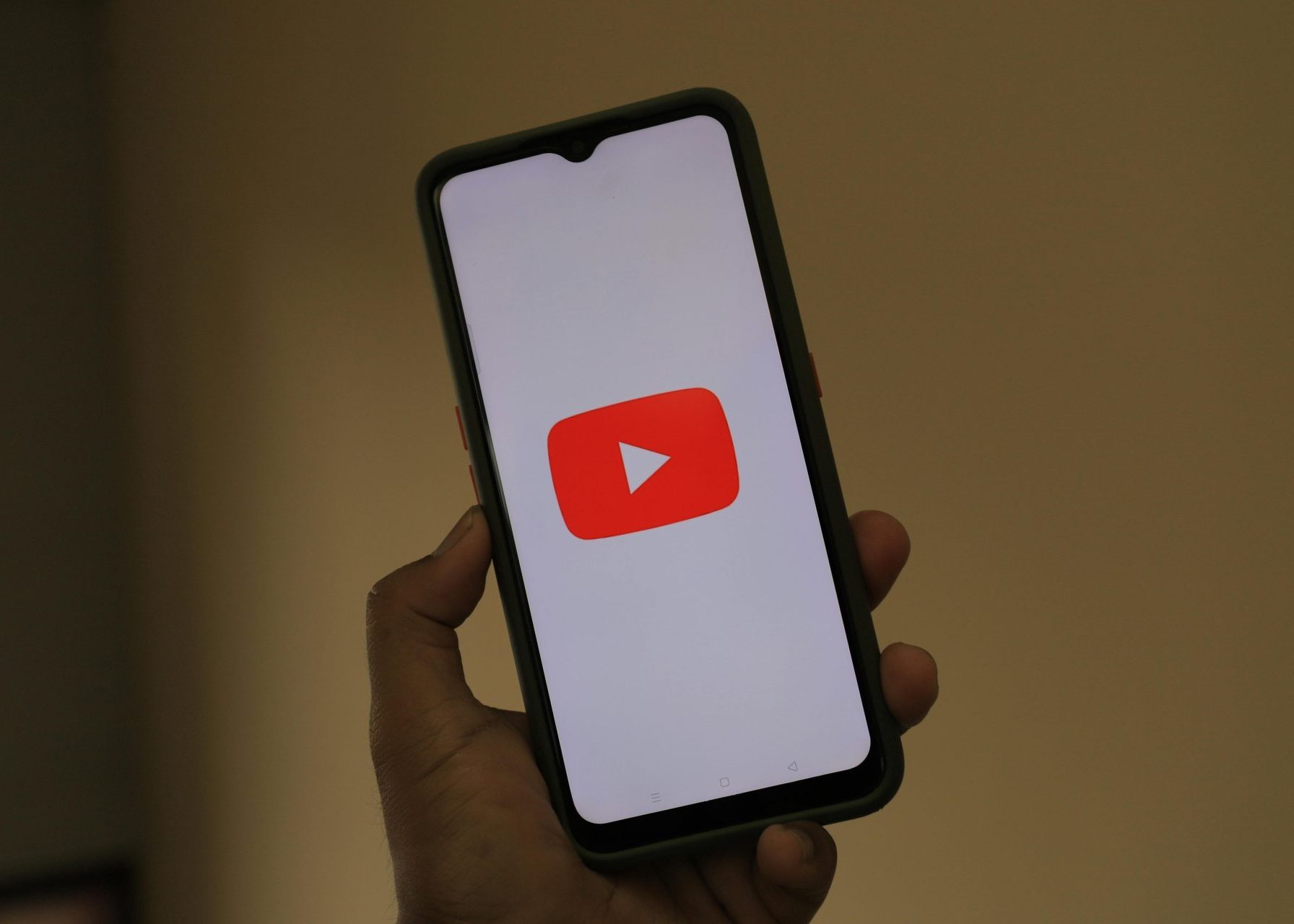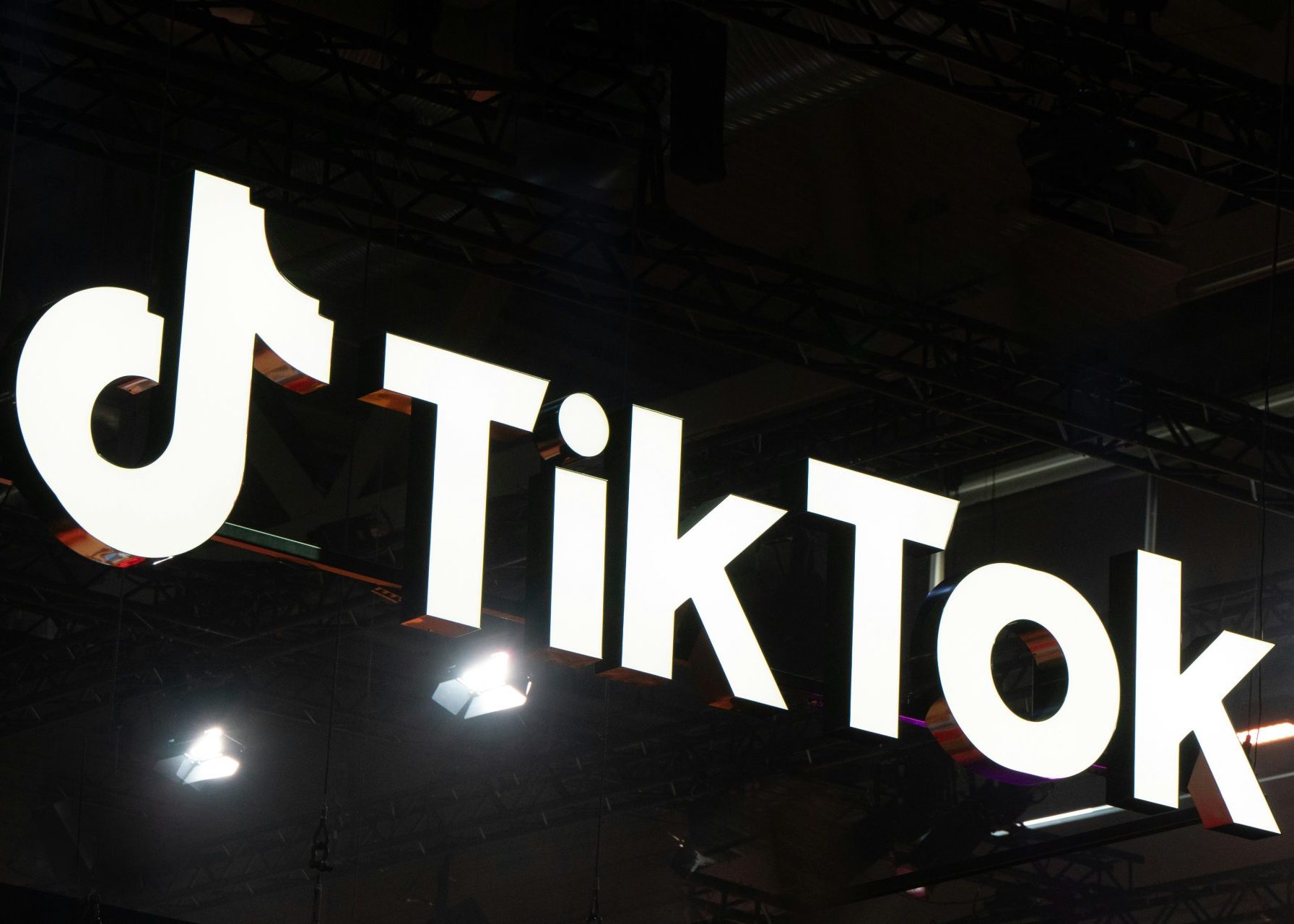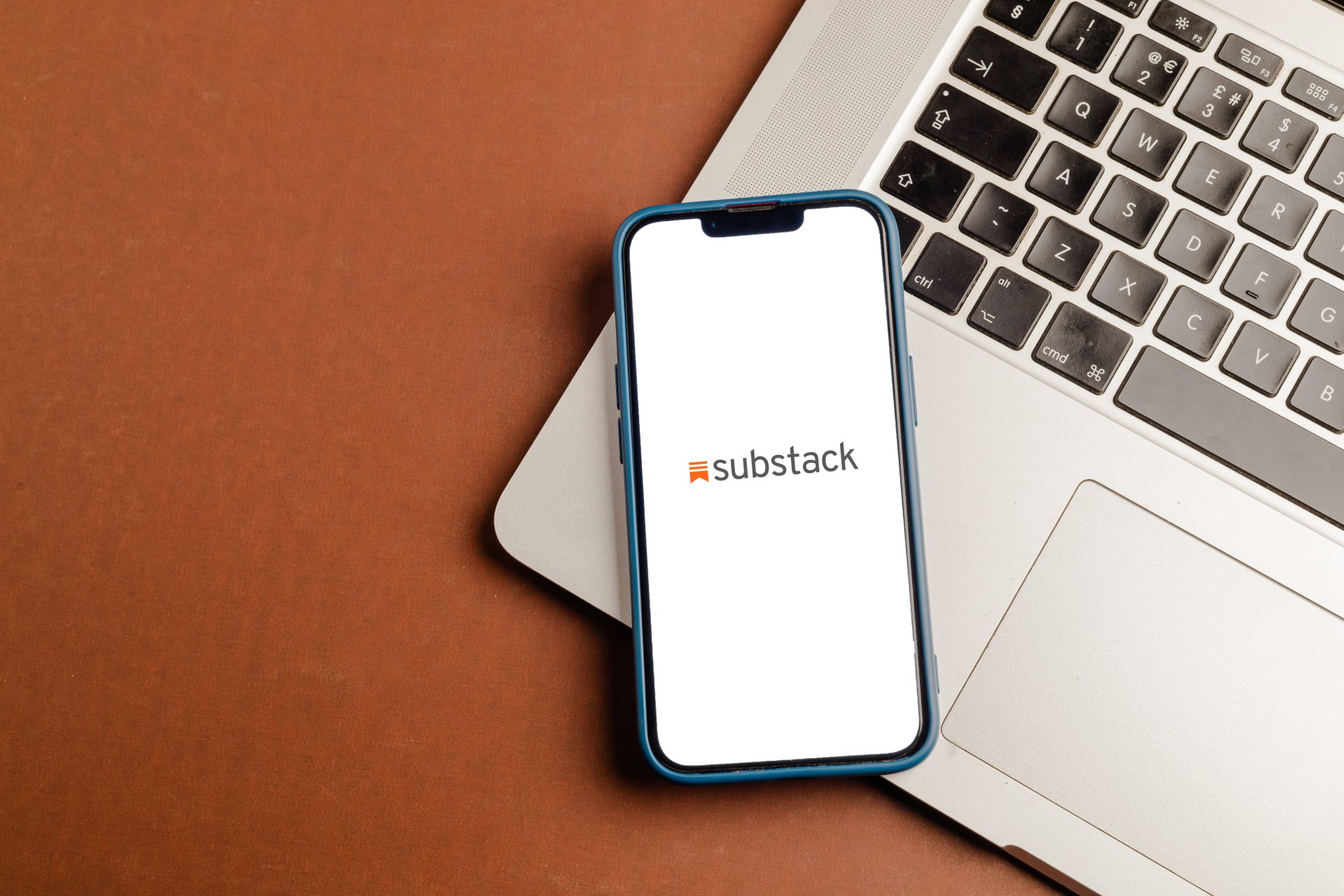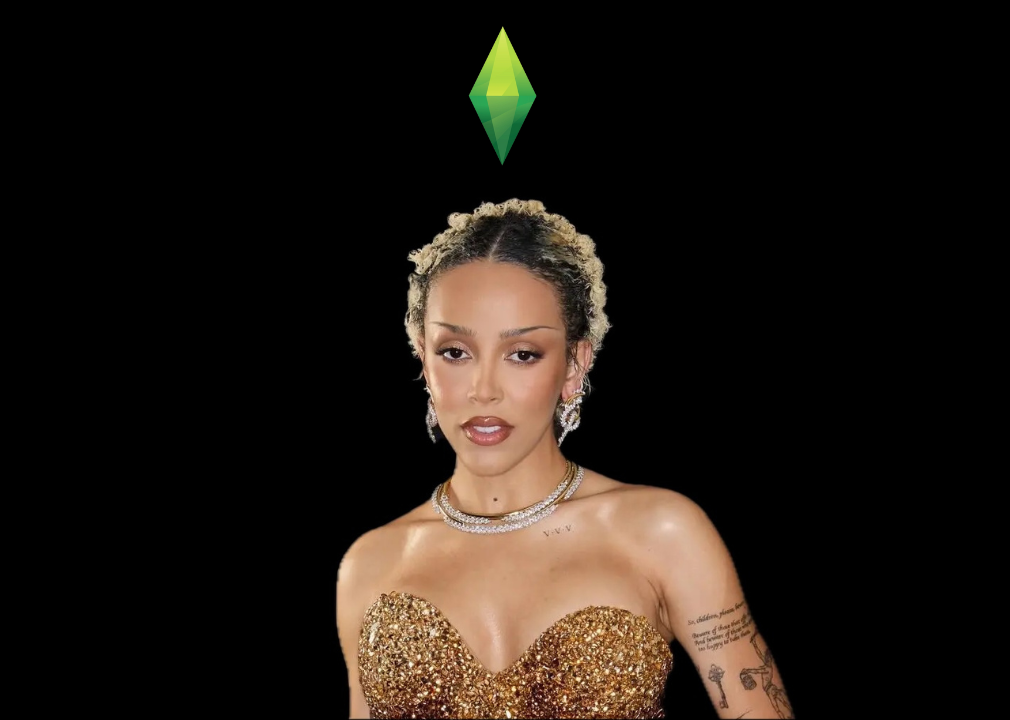The rise of short form video
The roots of video shorts stretch all the way back to 2010 with Snapchat, where users could send single use, several second video messages. It gained popularity and became more widely consumed in 2013, with the launch of the now defunct social media platform Vine. Content creators called ‘Viners’ were some of the earliest monetized short-form video creators for social media.
The short form revolution really began in 2018 with the launch of TikTok. Rival platforms like Instagram and YouTube were forced to respond in the following years, creating Reels and Shorts to keep up with the runaway popularity of videos measured by the seconds.
The popularity of short content is intrinsically linked to the rise, and dominance, of the smartphone. With a high-quality camera now in every pocket, everyone can create and upload videos for social media. As the media mix on social platforms leans ever further towards user generated content, it naturally reduces in average length. Users, in turn, come to expect brevity, authenticity, and variety.
As mobile users, audiences are looking for brief, satisfying, digestible content throughout the day, whether it’s during travel or in a moment between other activities. There’s often dismissive talk of ‘attention spans’ when it comes to social media content – while attention spans are certainly shorter, this is more a result of an increased desire for time-efficiency rather than some kind of cultural decline.
It’s important to note that the rise of short content doesn’t even necessarily come at the expense of longer content. Part of the reason short form content has grown so much is that it has plenty of space to; rather than rivalling, it’s mostly complementary to longer videos. In the media ecosystem, short content sparks interest, entertains, and intrigues, leading users to discover topics, influencers or products via more in-depth means like longer videos or websites.
Every leading platform now leverages short-form video to engage audiences – whether as the primary form of content or as a rapidly growing share of in-app time. Let’s take a look into the subtle but important differences between each one.
TikTok
TikTok is the undisputed champion of short form content. Having sparked the shift to bite-sized media, it continues to lead the way in creator tools, analytics and algorithms, influencer engagement and sparking new trends.
All content on TikTok is technically short form. Though users can now publish significantly longer videos, up to 10 minutes in length.
It has one of the strongest influencer communities of any platform, and accommodates personalities from global celebrity right down to micro-influencer levels. It’s known for its ability to give emergent influencers their first start, and the plethora of collaborative tools available through TikTok Creator Marketplace.
In 2022, we teamed up with ODEON to challenge people’s habits around going to the cinema. We used TikTok to attract new customers, and to highlight the unrivalled sensory experience the cinema brings. Our creative concept revolved around #FeelsGoodToFeel, underlining that sensory experience that would later educate, entertain, or excite viewers through engaging influencer content. Teaming up with beloved creators like Max Balegde, who took over the brand TikTok channel, we set up a hilarious “Bottom of the Popcorn” lobby chat” interviewing cinema-goers. We also brought in family and parenting creators who dressed up as characters from, then present, cinema titles. This campaign highlighted the power of TikTok, and how we can leverage the platform to create deeper connections between brands and their online consumers.
Instagram Reels
Instagram reels have the essence of TikTok videos, with some significant differences. Like TikTok, users can produce short videos (15 to 60 seconds) and make use of a powerful suite of creative features to do so, from AR effects to transition tools.
Unlike TikTok, Instagram Reels live alongside their older cousin, Instagram Posts. Reels can be discovered in a variety of ways, from the newsfeed to the ‘Explore’ tab, as well as through Stories, which makes them an invaluable tool for maximising impressions and reaching non-followers, boosting exposure.
Reels are rich soil for influencer marketing, perfect for introducing a brand or its products and motivating audiences to investigate relevant Instagram profiles and their posts.
For many, Instagram is the original home of beauty social media and influencer marketing. In many ways, Instagram pioneered the contemporary beauty space online with a focus on aesthetics and media-over-text which lay the perfect foundations for beauty influencers. One brand that is always on point, Revolution Beauty. The brand often partners with Instagram creators to promote their products and initiatives, like this campaign promoting their bronzing drops. The before and after video is a selling method as old as time, and it’s clear why – in the hands of skilled content creators. Reels enabled influencers to provide full understanding of exactly how the product works and how they can fit it into their existing beauty routine, all while making the content highly aesthetic.
YouTube Shorts
YouTube has been a mainstay of internet video content ever since its launch in 2005. It didn’t miss the opportunity to jump on the short-form wagon and has done an exceptional job through its Shorts.
The nuts and bolts of Shorts are familiar, but Google has shaped the media mix on YouTube to ensure that Shorts complement its traditional video format. Shorts are often used to single out certain moments from longer videos or focus on trending topics. The speed at which users can create shorts allows them to respond to trends, to other users, or to engage with wider audiences and draw traffic to their other content.
While YouTube is one of the more mature social platforms, Shorts is proverbially the “new kid on the block”, in comparison to TikTok and Instagram Reels. But, brands are starting to realise its capabilities.
Fall Guys, the colorful battle royale game where wobbly jellybean-like characters race through obstacle courses, took Shorts placements to a new level. They teamed up with gaming creator heyBrandonB, throwing him into an augmented reality, where he took on the games’ zany mini games. Shorts’ claim to the short-form throne is that it can generate unprecedented reach and visibility, giving YouTube’s grip on the media landscape. This piece of influencer content, uploaded in August 2024, has over 126 million views, and over 1.4 million likes, showcasing Shorts’ ability to scale content, when its done right.
How brands can elevate influencer campaigns with short form video
Leverage platform-specific features
Considering how many parallels there are between YouTube Shorts, Insta Reels and TikTok videos, it’s tempting to lump them all together in your marketing strategy. However, doing so ignores the subtle yet significant differences between them.
Today’s audiences are engaged with each platform’s unique flavor; adopting a one-size-fits-all approach to your short-form influencer marketing is likely to cause your content to ring hollow or feel generic, costing you the engagement that so many brands are competing for.
TikTok, for example, thrives on trends and challenges – content is unpolished, often humorous, and goes where the prevailing winds blow. Instagram, in comparison, leans towards higher production values, visual storytelling, and aspirational content. YouTube Shorts excel at linking into a channel’s larger catalog, and dominate in verticals such as gaming.
Product integration and storytelling
We’ve established why short form content is popular – it’s digestible, offers immediate payoff, offers variety, and doesn’t demand much from the viewer.
While it may seem obvious, far too many brands forget exactly why their users are seeking out short-form content in the first place – the result is uninspired, ‘inauthentic’ content that earns you an instant swipe and wasted investment.
The core of short form content is short-form storytelling. If you want to market your product, it needs to be wrapped in a narrative. This is where influencers really shine. They can provide your product with a relevant context, whether it’s giving their thoughts on the product itself based on their interest or expertise, recording their direct experience of an event, for example, or creating comedic or emotional content in collaboration with your brand.
Whatever approach you take, remember what you audience have come to the platform for, and make sure your marketing content is in service to the ultimate goal of immediate gratification for your viewer.
Micro influencers and niche communities
Partnering with smaller creators is great for brands looking to create more engaging and tailored campaigns for niche audiences. By working with micro influencers and clearly defined communities and subcultures, you reap several benefits:
· A narrowly defined audience means your audience will be highly engaged. Not only that, but you can address them directly, explicitly, and make them feel value
· Audiences love micro-influencers because it offers the potential to have a real, two-way relationship with them. With smaller followings, influencers are often hyper-engaged and familiar with their audiences, making interactions that much deeper and authentic
· Not only is engagement high, but relative costs will be low compared to big name influencers. The scale will be smaller as a result, but the return on investment has the potential to reach all-time highs.
It’s essential that you build a deep understanding of the fledgling communities and micro-followings that populate each platform. The small scale of these user groups means that they’re often based entirely, or predominantly, on a single platform.
Challenges, hashtags, and user-generated content
Short form video is used to create challenge and hashtag campaigns that require users to submit their own content. User contribution is a major driver engagement in user communities, binding them to people, causes and in many cases, products.
Finding and leveraging opportunities to integrate your brand or product into a challenge or hashtag will take your audience engagement far beyond the like button.
TikTok dominates when it comes to user-generated content – the discovery-focused nature of its algorithm means that any user can see their contribution hit the limelight, and user content blends seamlessly with similarly raw, organic influencer content.
Instagram offers similar opportunities, but is often led more by a visual and aesthetic focus, than TikTok’s audiences, which may be driven more by entertainment, comedy or daring. Instagram is dominated by lifestyle content, meaning hashtags and challenges are more likely to bring people together around shared values and lifestyles, rather than the latest trend-of-the-week.
YouTube Shorts are a microcosm of YouTube itself. Established personalities tend to dominate and users are unaccustomed to seeing unfamiliar faces. Influencers and channels will accumulate consistent and dedicated followings, usually around a single and specific topic. User-generated content is not a constant here, but does intensify in certain areas such as videogaming and streamers, who will upload footage or cutdowns of longer videos.
Don’t Work in Silo
Brands should avoid choosing just one platform to activate on because each platform has its unique audience, content format, and engagement style.
Relying on a single platform limits reach and misses out on potential customers who may prefer other channels.
You’ll find that merging these channels together helios to diversify campaigns, allowing brands to tap into different demographics, maximize visibility, and engage users in varied ways.
A multi-platform approach ensures broader impact, better ROI, and more opportunities to create meaningful connections with diverse audiences.
Discover the full potential of short form video
While you may lean towards one platform over another depending on the nature of your brand and its audiences, working with one platform in a silo will almost always leave significant value on the table.
When it comes to influencer marketing, most brands must consider and create for the three titans of social media. However, we’ve seen that this creation must be nuanced and specific to the platform.
TikTok is a highly influential, exclusively short-form landscape where discourse can change in a moment and viral trends emerge daily. Instagram is an aesthetics led, lifestyle-oriented platform where users collect around shared interests and aspirations, and short-form content nests organically with their static counterparts. YouTube Shorts are fast moving media in a relatively slow influencer landscape, providing bite-sized content for communities built around shared interests.
Finding success across all three calls for a robust multi-platform strategy, with individualized research, influencer engagement, and content creation streams. There will always be cross-pollination and interface between different social media platforms – unless, by simply stamping a cookie-cutter approach across them all, you snuff it out.
…
Delivering effective influencer marketing for one social media platform can often feel daunting – let alone three. With the limits of short-form content constantly growing, along with the creative tools available, you need to be fast on your feet.
The Goat Agency is one of the world’s leading experts in influencer marketing, helping brands achieve unified, yet specific, multi-platform marketing.
Whether it’s discovering – or creating – the TikTok trends, building a relationship with niche Instagram communities, or getting your brand in the hands of YouTube superstars, we’ll help you discover the full potential of short content.
